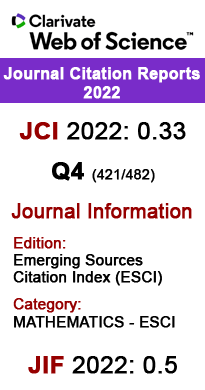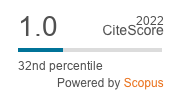Malaysian Journal of Mathematical Sciences, September 2021, Vol. 15, No. 3
Population Mean Estimation Using Weight Adjustment for Unit Non-Responses
Jayamanne, I. and Ramanayake, K. P. A.
Corresponding Email: imali@stat.cmb.ac.lk
Received date: 26 December 2020
Accepted date: 26 April 2021
Abstract:
The population mean is often estimated using the sample mean with no consideration to the design of the survey, the survey errors and biases. Although surveys are properly designed to reduce errors, unit non-response and coverage errors are mostly unavoidable. Thus, non-response adjustment for the sampling weights is essential when estimating the population mean. A survey of Sri Lankan university graduates was conducted in 2016 for a random sample of Art graduates who had graduated in 2012 in all state universities. This study aims to estimate the mean waiting time for the first employment after graduation for all 2012 Arts graduates based on these data. The response rate of the survey was $48%$ and it was noticed that the response rate varied with university, gender and ethnicity of the graduates. The sampling weights were adjusted using the individual propensities and the class propensities determined by the propensity adjustment score model to select the best non-response adjustment weights for the data. Next, the final weight adjustment was done using post-stratification, raking and calibration using census data that was available, taking university, ethnicity and gender as auxiliary variables. The model with the individual propensity adjustment when calibrated using university and gender cross-cell counts and marginal counts for ethnicity provided the smallest standard error for the population mean. Finally, the mean waiting time for the first employment was estimated using these adjusted weights as 15.19 months with a standard error of 0.657.
Keywords: calibration; post-stratification; propensity model; raking; trim weights









